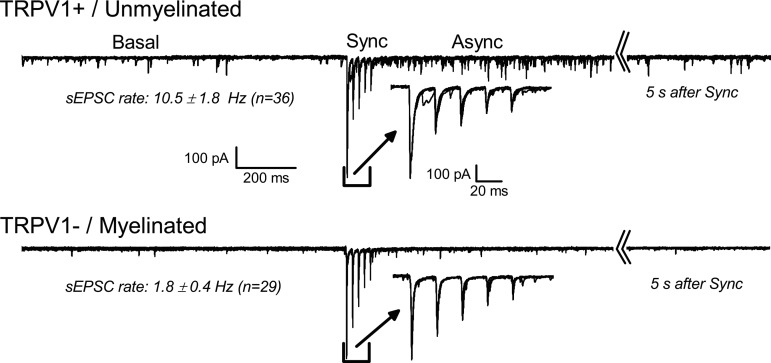Fig. 3.
Central transmission for transient receptor potential vanilloid 1 (TRPV1)+ and TRPV1− solitary tract (ST) afferents. Recordings are from a rat horizontal solitary tract nucleus (NTS) slice. Panels show responses to ST activation in two different representative second-order NTS neurons with TRPV1+ ST input (top) and TRPV1− ST input (bottom). Labels mark the separate regions of the record analyzed to measure the specified features. Traces for five stimulation trials are overlaid in each case. Basal activity is measured for 1 s before ST activation (Sync, expanded in inset). ST activation delivered five 100 ms shocks at 50 Hz. Sampling continued for 6 s before repeating (note the broken axis). The 1 s following the ST synced responses is the asynchronous period (Async). The typical TRPV1+ neuron has high Basal spontaneous excitatory postsynaptic current (sEPSC) rate before ST activation and the Async period has elevated EPSC activity that decays in frequency back to the Basal rate by the end of 6 s. ST-EPSC activity was blocked from the TRPV1+ afferent during capsaicin exposure (not shown). TRPV1− afferents do not have additional EPSC activity following identical ST shocks and capsaicin does not block the ST-EPSC activity.

